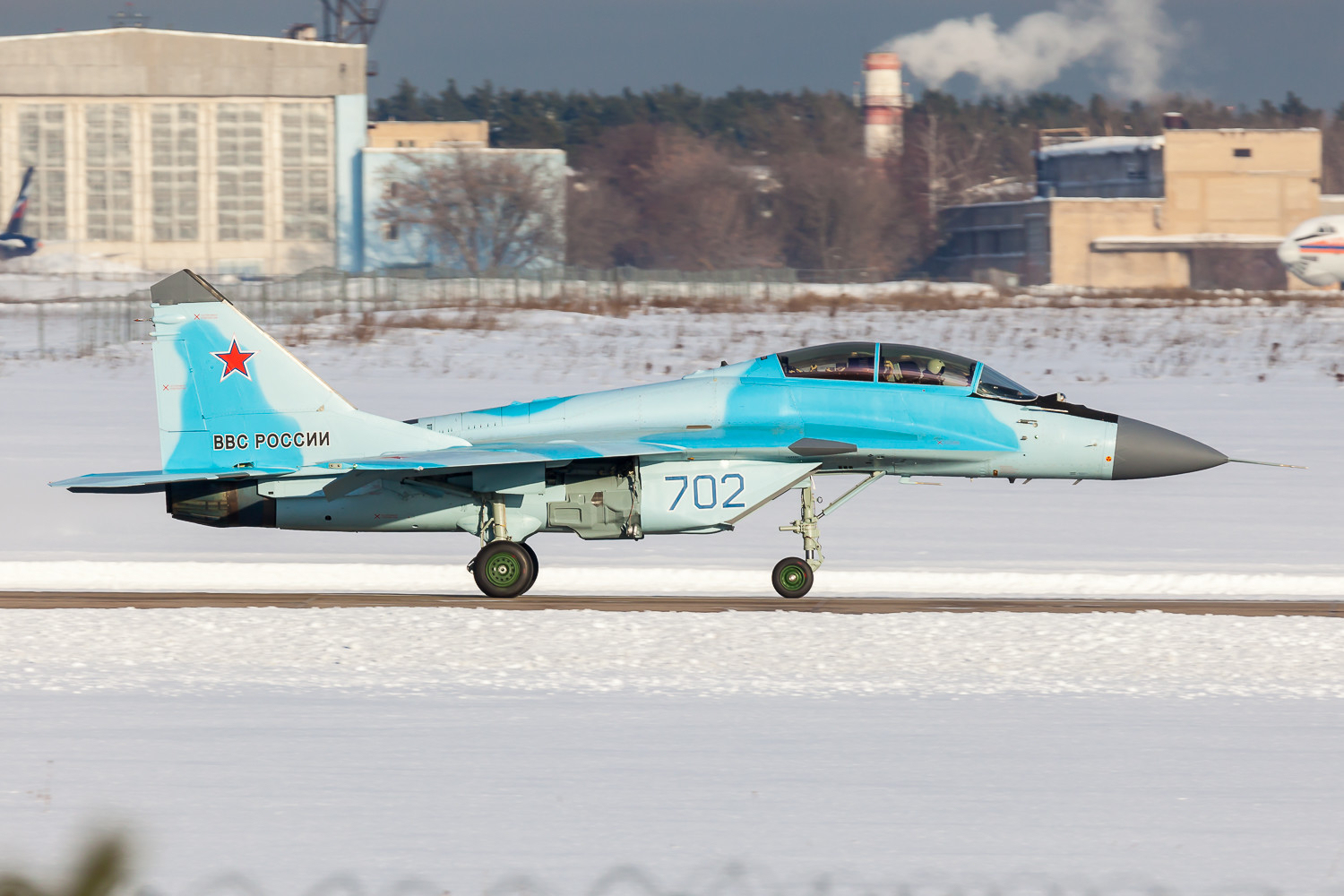No F-35: Russia's MiG-35 Fighter Looks More and More Like a Fake
Critics argue that the MiG-35 is more of a marketing ploy than a true competitor to Western fighters like the F-35, raising doubts about its effectiveness and future.
Top 4 Points You Need to Know: The Russian MiG-35, an upgraded variant of the MiG-29, has been touted for its advanced capabilities, including improved avionics and weapons systems.
-However, despite claims of superior radar and performance, the aircraft remains largely unproven, with few units produced and limited operational use.
-Russia has struggled to find foreign buyers, and the MiG-35's performance in Ukraine is unconfirmed.
-Critics argue that the MiG-35 is more of a marketing ploy than a true competitor to Western fighters like the F-35, raising doubts about its effectiveness and future.
MiG-35 Fighter: Marketing Hype or Military Power?
"The fighter aircraft has been specially designed for warfare amid increased intensity conflicts and highly dense air defense. The available high indicators have been achieved thanks to a set of onboard equipment mounted on the plane along with a new optical location system and radar signature reduced by several times," Slyusar said at a meeting of the Military and Industrial Commission in a report to the Russian president, according to state media outlet Tass.
In the nearly seven years that have passed since the MiG-35 remains mostly hype. Kremlin officials have claimed that the fighter's onboard radar allows detecting and tracking from 10 to 30 targets at a time at a distance of 160 kilometers, but it would seem such bolster was just aimed at attracting foreign buyers.
What We Know About the MiG-35
In the case of most Russian military hardware, there is what is claimed and what is true.
The MiG-35 is an upgraded variant of the MiG-29K/KUB and MiG-29M/M2 that the Kremlin has flaunted for its advanced capabilities. The all-weather combat attack aircraft was developed by the Mikoyan design bureau, a subsidiary of the state-owned United Aircraft Corporation (UAC), as a multirole aircraft that could be employed to destroy enemy targets day or night, including moving and stationary ground and surface targets.
The choice of name is notable, so much so that some experts have contended that the new "MiG-35" designation was simply a marketing ploy – and not really all that clever. It may have been meant to suggest the MiG-35 was Russia's answer to the Lockheed Martin F-35 Lightning II.
Yet, that hardly seems the case, and most aviation experts will quickly point out that the medium-weight aircraft is still at heart little more than a fourth-generation "++" multirole fighter.
Russia has continued to hype the MiG-35's capabilities, notably that it features vastly improved avionics and advanced weapons systems, including the new Phazatron Zhuk active phased array radar, which can detect multiple targets. The array can reportedly track upwards of 30 targets and engage six of them simultaneously – with the forward system able to detect incoming threats from at least 50 km (30 miles). It has been claimed that the radar system is also resistant to electronic countermeasures and has a longer detection range than previous Russian-made radar platforms.
It has yet to be seen if the system performs as advertised.
The aircraft is further reported to be fitted with two Klimov RD-33MK after-burning turbofan engines, which can enable the aircraft to reach a maximum speed of Mach 2.25, and it has a combat range of about 620 miles.
With nine hardpoints, the MiG-35 can carry a selection of missiles, rockets, and bombs including Kh-31A anti-ship missiles with active radar seekers, the Kh-31P anti-radar missiles, Kh-29TE missiles, and KAB-500Kr TV-guided bombs. The aircraft is also armed with a 30mm cannon but carries just 150 rounds of ammunition.
An Export Aircraft – Not Likely
Russia remains the sole operator of the MiG-35, and yet, even as production has been slow, a variant has been considered for export.
India had been named as a potential buyer, and the MiG-35 was seen as a potential contender to the Eurofighter Typhoon, F/A-18E/F Super Hornet, Dassault Rafale, JAS 39 Gripen, and F-16 Falcon for the Indian Air Force’s MRCA competition to select a new multirole combat aircraft. India was reportedly not pleased with the MiG-35's performance, specifically the jet’s radar and thrust abilities.

Other countries that reportedly considered the aircraft include Argentina, Bangladesh, Egypt, Malaysia, Myanmar, and Peru. No aircraft have been delivered to date.
MiG-35: Too Few To Matter
Even if the jet fighter were to live up to all the hype, it suffers from the same problem as the fifth-generation Sukhoi Su-57 (NATO reporting name "Felon") stealth fighter and the T-14 Armata main battle tank (MBT) – namely that Moscow can't build enough of them.
As previously reported by Harrison Kass for The National Interest, "Only about a half-dozen MiG-35s have been delivered to Russian forces."
Last year, Sergei Korotkov, chief designer at the United Aircraft Corporation (UAC), claimed that the MiG-35 was deployed to Ukraine. However, as Defense-Blog.com reported, deployment of the MiG-35 in the Ukrainian conflict is currently not supported by anything other than a statement in the Russian media.
Russia continues to hype its "advanced" weapons, claims they were used successfully, and presents no evidence that its statements are true. Thus it is hard to accept that the MiG-35 is anything more than a mere prototype of a MiG-29K variant.
Author Experience and Expertise
Peter Suciu is a Michigan-based writer. He has contributed to more than four dozen magazines, newspapers, and websites with over 3,200 published pieces over a twenty-year career in journalism. He regularly writes about military hardware, firearms history, cybersecurity, politics, and international affairs. Peter is also a Contributing Writer for Forbes and Clearance Jobs. You can follow him on Twitter: PeterSuciu.
All images are Creative Commmons and/or Shutterstock.


